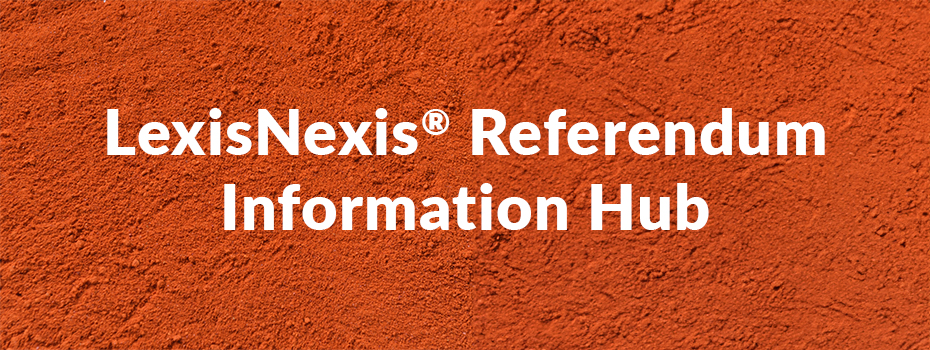Referendum Information Hub

Welcome to LexisNexis' Referendum Information Hub
Here you'll find expert commentary, curated news, legislative updates and educational material to keep you informed about the upcoming Referendum on the Indigenous Voice to Parliament. This dedicated site will provide insights on legal and emerging policy issues, answer your questions on the Referendum process and much more. All resources in this site are free to access and can be shared.
Our Mission
We’re working to bring the percentage of people living outside the umbrella protection of the rule of law down to zero through our day-to-day business operations, products and services, and actions as a corporate citizen. Advancing the rule of law is a concept that unifies our company across the globe and is passionately supported by the people of LexisNexis.
Frequently Asked Questions
In Australia, the Commonwealth Constitution can only be altered by a vote of the people. This is done through a Referendum. In 2017 First Nations people from around Australia gathered at Uluru in Central Australia for the First Nations’ National Constitutional Convention. It was during this Convention that the Uluru Statement from the Heart was written and signed. The Uluru Statement from the Heart asks the people of Australia to recognise the unceded sovereignty of the First Nations people of Australia by way of a “First Nations Voice enshrined in the Constitution”. The 2023 Referendum proposes to amend the Commonwealth Constitution to reflect these wishes for a First Nations Voice to be included in the Constitution.
Those who are eligible to vote in the 2023 Referendum will be asked to answer “yes” or “no” to the following: “A Proposed Law: to alter the Constitution to recognise the First Peoples of Australia by establishing an Aboriginal and Torres Strait Islander Voice. Do you approve this proposed alteration?”.
Since Federation in 1901, there have been 44 Referendums held in Australia. Of these 44 proposals to change the Commonwealth Constitution, and only 8 have been successful. These have included:
- The 1910 proposal to give the Federal Government unrestricted power to take over State Government debts (54.95% in favour);
- The 1967 proposal to give the Federal Government the power to enact laws for Aboriginal people and to allow Aboriginal people to be counted in the National Census (90.77% in favour); and
- The 1977 proposal to include a required retirement age for Judges sitting in Federal courts (80.10% in favour).
For the Constitution to be altered in Australia, a Referendum must result in a majority, or more than 50 per cent, of people voting “yes” in a majority of states, ANDan overall national majority of “yes” votes across all states and territories combined. This is what is known as “the double majority” rule. There have been five instances where a “yes” vote was achieved overall across the country, but the Referendum failed to win a majority of states.
Yes, it is compulsory to enrol and vote in a Referendum (and federal elections) for all eligible Australian citizens aged 18 years and older. If you are already on the electoral roll for federal elections, then you do not need to enrol again to vote at a Referendum. There is a financial penalty for not voting at a Referendum.
Like a Federal election in Australia, polling booths will open and close in each state and territory on the same day for people to vote in the Referendum. When polling closes, the votes will then be counted and certified. If a Referendum reaches a “double majority” (see above), then the Constitution will be altered. If a double majority is not reached, then the Constitution remains unchanged. The result of the Referendum is legally binding.
 LexisNexis
LexisNexis




